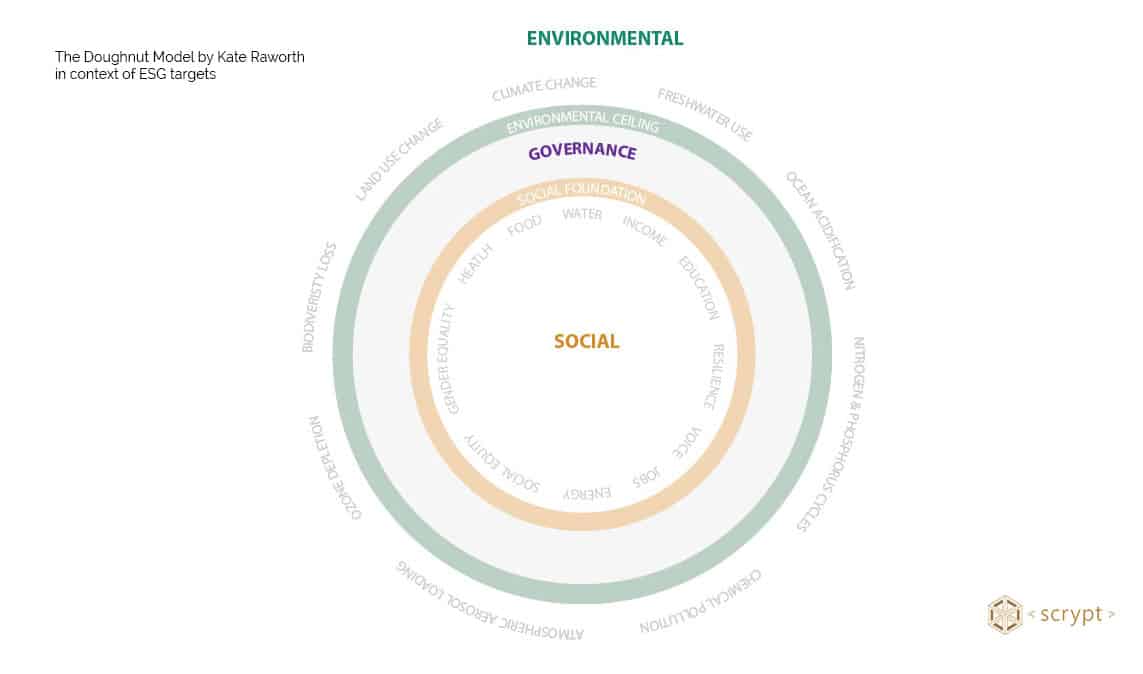Both the Doughnut Model of Kate Raworth’s book “Doughnut Economics” and the UN Sustainable Development Goals (in short: SDGs) have been getting a lot of attention. Amsterdam has recently made headlines for aiming to adopt the Doughnut Model in practice, with global initiatives following suit. The SDGs have gained global attention and popularity over the last years, especially in the field of social entrepreneurship. Investors are increasingly evaluating their portfolios according to ESG factors. As in many sectors, this is leading to a growing set of abbreviations and frameworks for which the connections are sometimes hard to grasp.
Early last year, I looked into the links between these various frameworks. And because I love visual models, I tried to map (some of) them. I included the Sustainable Development Report of 2019 and other sources, and explored the connections of the Doughnut Model with the SDG entry points highlighted here. This effort greatly helped to inspire and inform our priorities of 2020, and was one of the factors that got us to ultimately launch Tiramisu and refine our view on what we should dedicate our time to.
But as 2020 went on, my draft publication titled “Starting points for the Decade of Action” became just one of the items in a forgotten folder. All the starting points had shifted. But hey – the mapping still holds. So with some delay, here is what I found – in the hope that it will inform some of your initiatives as well.
First off, let’s start with some basics for everyone who is not familiar. If you know all concepts and frameworks, go ahead and skip right to the comparison and mapping exercise.
The basics of SDGs, ESG targets, SDG entry points – and the Doughnut Model
What are the SDGs?
Although sometimes mistakenly used as nice ornaments for project presentations, the SDGs are a thorough framework for sustainable development. Each goal holds an in-depth list of indicators and sub-indicators on which basis progress is measured at global scale. You can find the full list of indicators and sub-indicators here.
The United Nations Statistics division publishes a yearly progress report on the goals. You can find the 2020 version here (spoilers – it is not very positive).
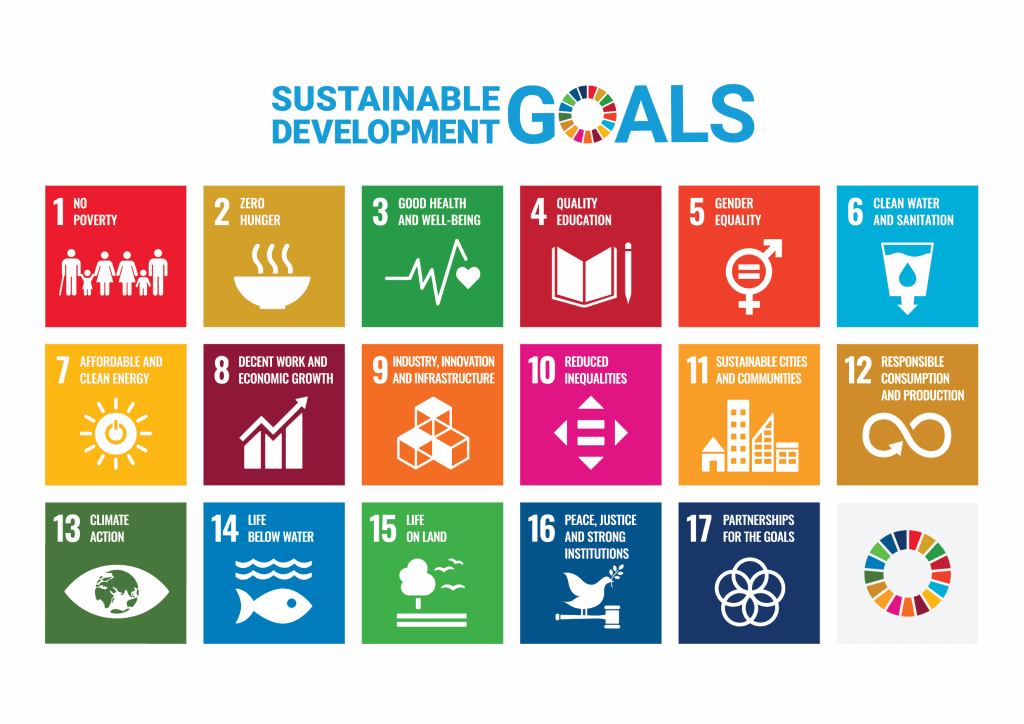 What are ESG targets?
What are ESG targets?
ESG stands for environment, social and governance factors. Among both retail and institutional investors, ESG factors gain importance – a study shows that 7 in 10 investors want to invest with a focus on ESG factors. However, many are not sufficiently informed about ESG strategies available to them. So while the evaluation of ESG credentials is in high demand, there is not yet one consistent methodology when it comes to measurement and traceability (side note: the linked article shows some interesting approaches for more accessibility including Machine Learning and Natural Language Processing to capture true investor sentiment).
What are “SDG entry points”?
Next to an extensive overview of status and gaps in our process towards the Sustainable Development Goals, the Global Sustainable Development Report 2019 highlights 6 core entry points for SDG achievement:
- Human wellbeing and capabilities
- Sustainable and just economies
- Food systems and nutrition patterns
- Energy decarbonization with universal access
- Urban and peri-urban development
- Global environmental commons
Interestingly, these entry points come very close to the “Six Fundamental Transformations” highlighted in the 2018 “The World in 2050” report. Those are (i) Human Capacity & Demography; (ii) Consumption & Production; (iii) Decarbonization & Energy; (iv) Food, Biosphere & Water; (v) Smart Cities; and (vi) the Digital Revolution. Apart from different groupings of similar topics, the Digital Revolution as a standalone topic is a key differentiation that “The World in 2050” went much deeper into in 2019.
Technology is mentioned in the Global Sustainable Development Report – just in a different context. The Report identifies four levers, which can be coherently deployed through each entry point to bring about the necessary transformations:
- Governance
- Economy and finance
- Individual and collective action
- Science and technology
What is the Doughnut Model?
The Doughnut Model, introduced with the book “Doughnut Economics” by Kate Raworth in 2017, essentially represents the “safe zone” between social equity and environmental boundaries that we should strive to get into. It introduces an “era of the planetary household”, which reflects the idea to manage our collective household in the context of these inner and outer bounds. In a visual, these boundaries remind of the shape of a doughnut, hence the name. Here is the model:
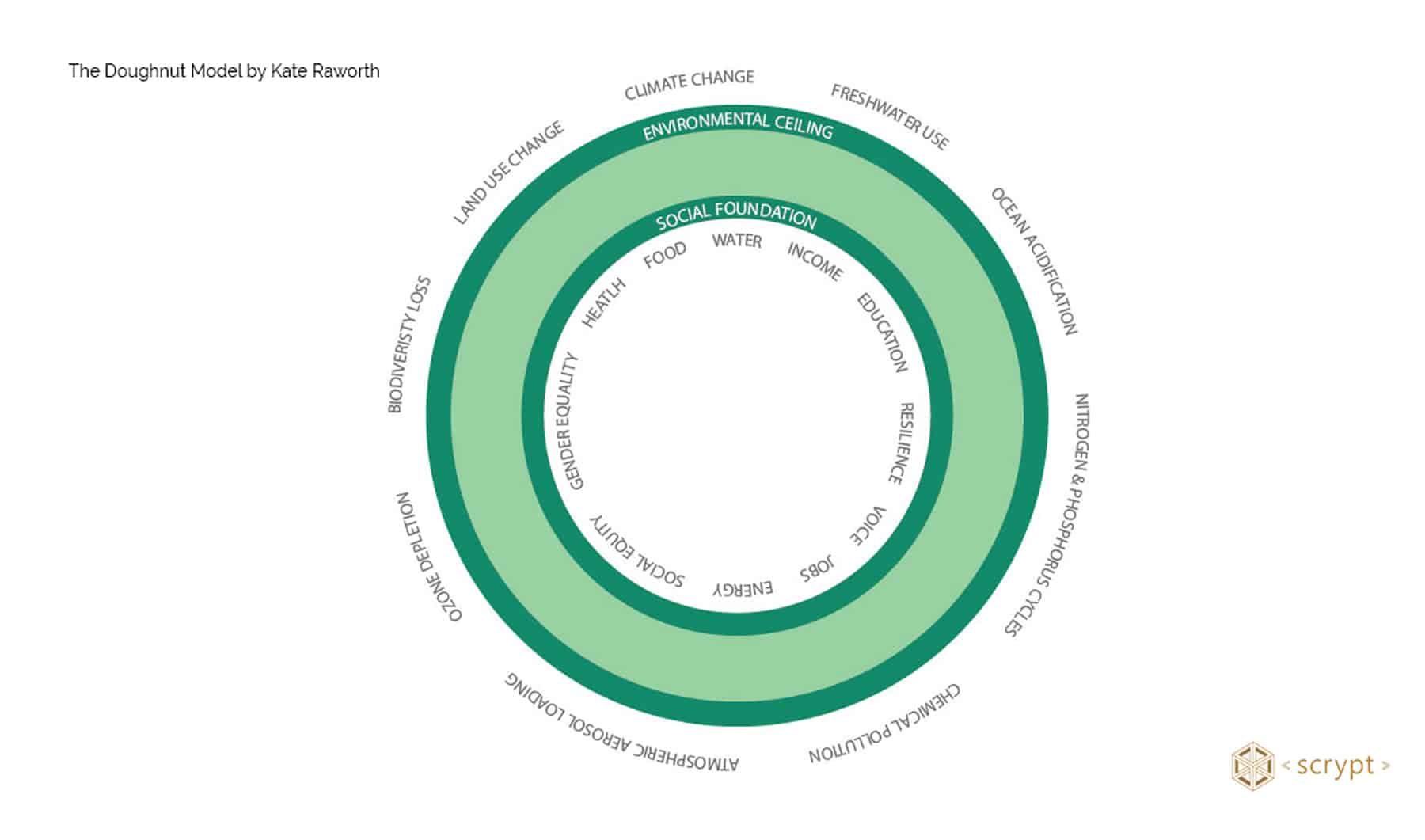
What I really like about this model is that it is extremely easy to grasp, and it clearly focuses on the “target area” (the doughnut) where all activities should land in terms of outcomes.
Let’s look a bit closer at the outer bound: It represents the environmental ceiling of the model. This ceiling is defined in terms of planetary boundaries.
What are Planetary Boundaries?
The planetary boundaries are a list of nine environmental boundaries, introduced by a group of earth system and environmental scientists. Johann Rockström, a prominent figure in this research, has given Ted Talks on the topic in both 2010 and 2020, and the Stockholm Resilience Center provides details and data on all boundaries.
Bringing them all together: A mapping experiment
How do ESG targets link with SDGs?
The link depends on the measures of sub-indicators, and which environmental, social or governance factors those measures relate to.
This is the one mapping I did not do myself: A mapping by Berenberg in their ESG office study titled “Understanding the SDGs in sustainable investing” divides SDGs across ESG factors in the following way:
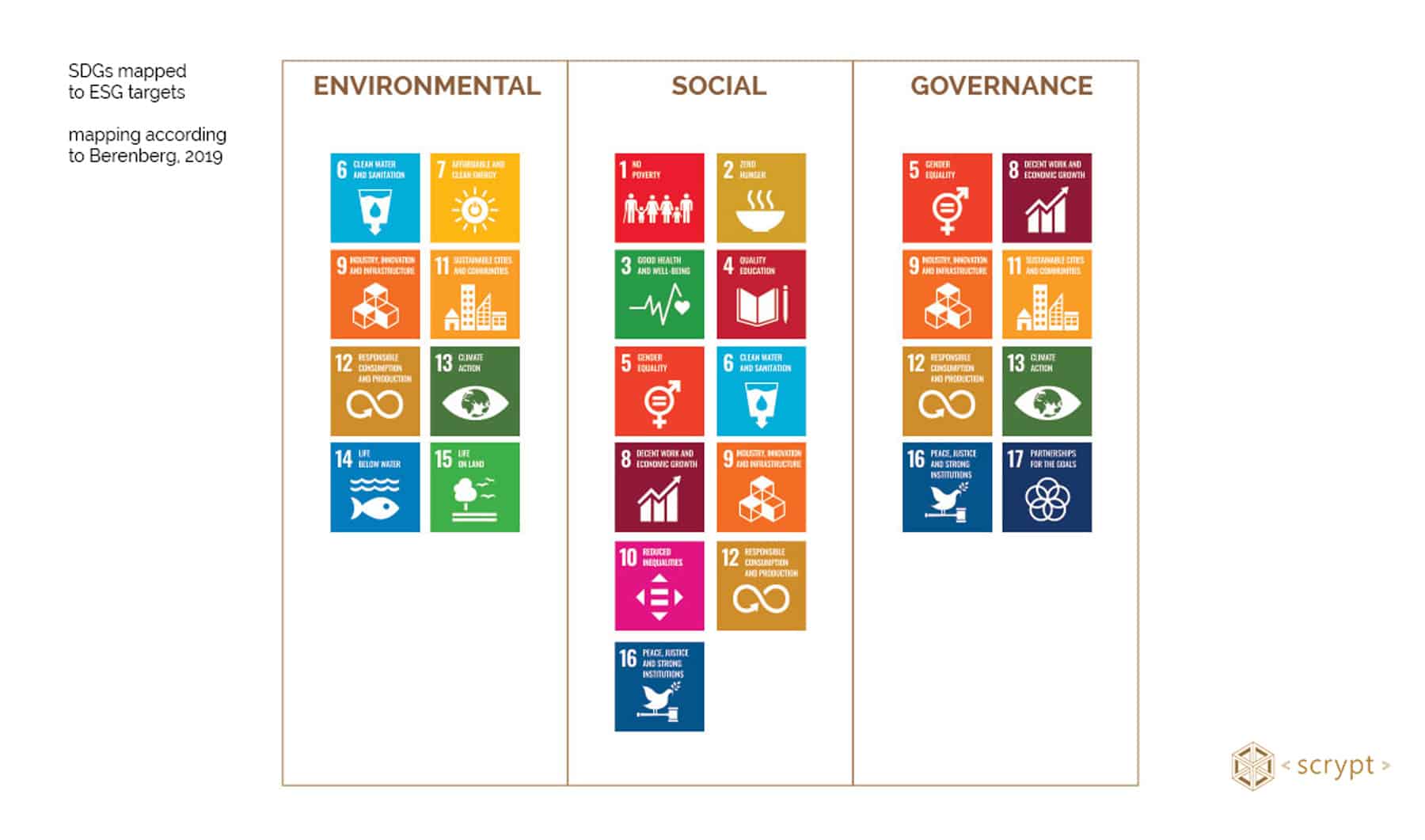 How does the Doughnut link to ESG targets?
How does the Doughnut link to ESG targets?
The context of ESG targets is extremely easy to grasp when it comes to the Doughnut Model: the outer bound defines environmental limits that should not be crossed, the inner bound defines social standards that need to be met. Governance is a bit more abstract and therefore harder to visualize. But as the key insight of the model lies in the “household management” that is needed to bring our systems in balance between the environmental ceiling and social standards, governance seems to be very much embedded in the Doughnut itself, like this:
Mapping the SDGs to the Doughnut Model
Now let’s move on to placing the SDGs in the context of the Doughnut Model. Here is my try, looking at the core focus of indicators for each factor:
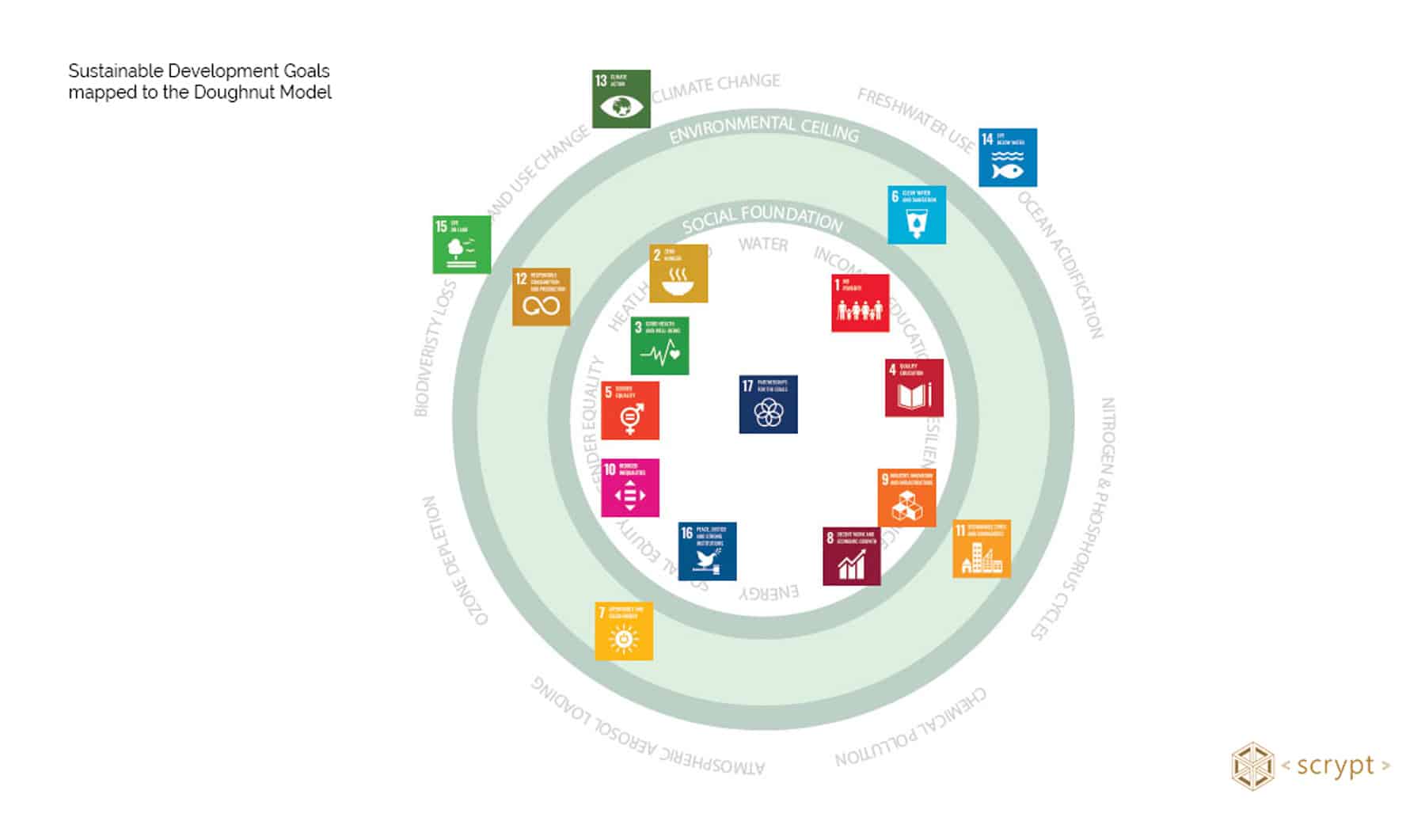
My main insights from this mapping experiment were:
- The SDGs are quite people-centric, with many factors having their core (though not all) focus on the social standards side of the Doughnut Model. Only 3 SDGs are fully focused on the environment.
- Only few SDGs are formulated in a way that clearly defines multiple or all targets within the Doughnut. This is exactly why it can sometimes feel that goals are “cancelling each other out”, where progress on one goal is directly or indirectly linked to steps back on others.
- SDG 17 is hard to place in terms of targets and seems to be more of a means to an end.
In which cases do SDGs fit right into the center of the Doughnut?
- They are linked to natural resources where both people and planet benefit from renewable concepts
- They have multiple indicators with sustainability embedded in the target formulation
Mapping SDG entry points to the Doughnut Model
As a reminder, the 6 core entry points for SDG achievement defined in the 2019 report were:
- Human wellbeing and capabilities
- Sustainable and just economies
- Food systems and nutrition patterns
- Energy decarbonization with universal access
- Urban and peri-urban development
- Global environmental commons
Additionally, the report highlights 4 key levers:
- Governance
- Economy and finance
- Individual and collective action
- Science and technology
If we map them to the Doughnut Model, this happens:
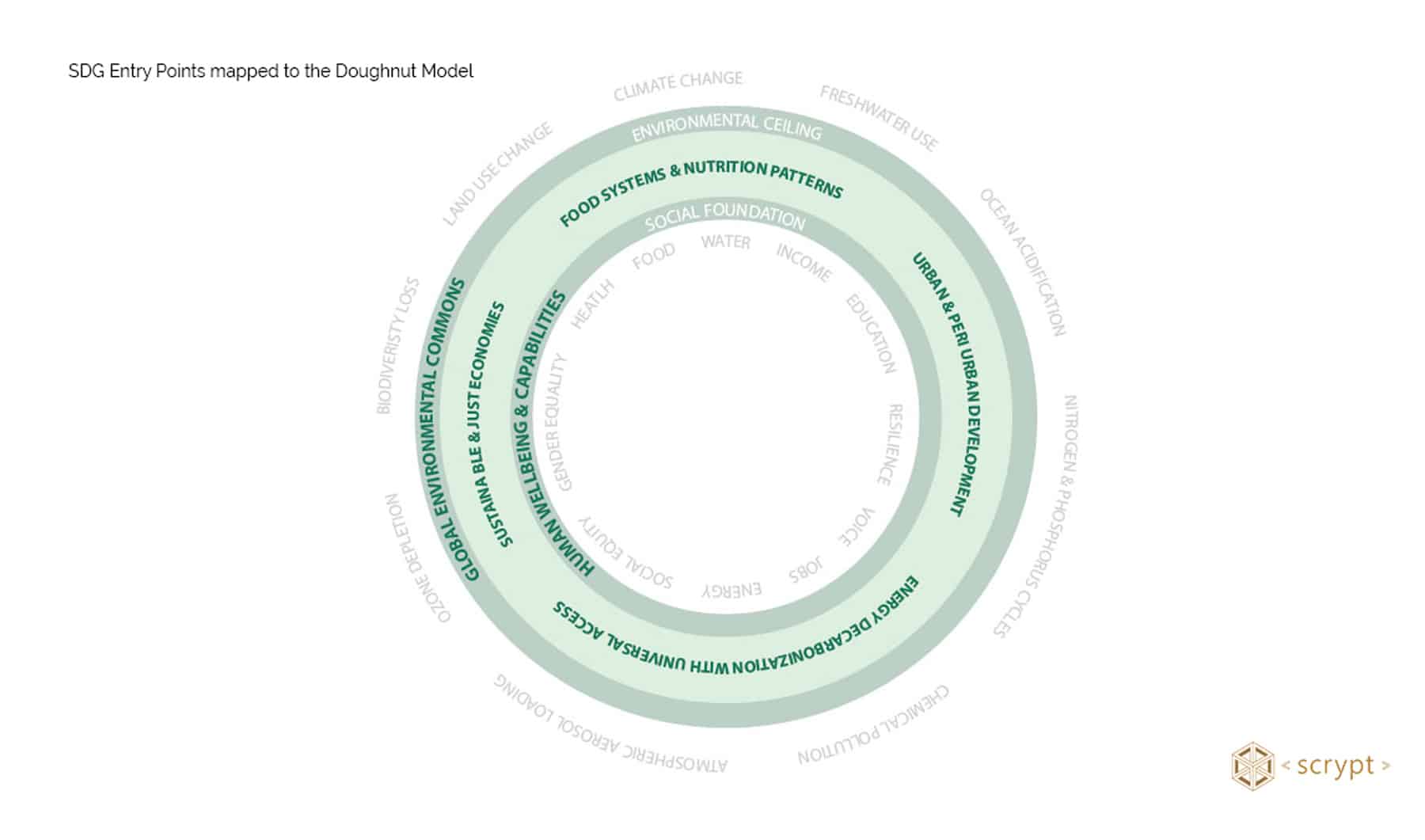 My main takeaway from this mapping experience is that the 2019 report makes a clear effort to formulate targets that are more in line with the “Doughnut” thinking.
My main takeaway from this mapping experience is that the 2019 report makes a clear effort to formulate targets that are more in line with the “Doughnut” thinking.
Conclusions
- When getting into and explaining all these concepts, I often find myself learning a new language. Of course this is commonplace for complex work environments, professions and organizations. But given that anyone in the world should factually care about and understand where we collectively need to drive our future, complexity can be a key barrier to progress.
- I better understood why it is so hard to look at SDGs in a tabular way, and why goals seem to cancel each other out: because they in fact are.
- Better defining the “middle ground”, as was done in the 2019 report, might be a viable solution to solve this problem.
- The Doughnut Model provides a simple and easy to grasp representation of that precise middle ground, putting it in a both measurable and understandable context. I keep coming back to this model after I first read about it in 2018, mainly for its simplicity.
In practice, hitting that Doughnut sweet spot means focusing on building solutions that fall right into this middle ground: where environmental preservation is simultaneously great for people, where we tackle inequalities without causing more harm to our planet, and where citizens can play a key role in driving progress.
And as the final takeaway from the Doughnut Economics book, I will reiterate the quoted statement of statistician George Box: ‘All models are wrong, but some are useful’.
If you find my mapping exercise useful or think it can be improved, please let me know.
_________________________________________________________________________________
Kate Raworth. Doughnut Economics: Seven Ways to Think Like a 21st-Century Economist. London: Random House, 2017
Independent Group of Scientists appointed by the Secretary-General, Global Sustainable Development Report 2019: The Future is Now – Science for Achieving Sustainable Development, (United Nations, New York, 2019)
TWI2050 – The World in 2050 (2018). Transformations to Achieve the Sustainable Development Goals. Report prepared by The World in 2050 initiative. International Institute for Applied Systems Analysis (IIASA), Laxenburg, Austria. www.twi2050.org
TWI2050 – The World in 2050 (2019). The Digital Revolution and Sustainable Development: Opportunities and Challenges. Report prepared by The World in 2050 initiative. International Institute for Applied Systems Analysis (IIASA), Laxenburg, Austria. www.twi2050.org
Maike Gericke
Maike Gericke is an experienced designer, strategist, innovator and marketer. Her passion for emerging technologies and social / environmental impact led her to start the innovation studio Scrypt with Khalid. Together, they rethink, research, build and teach the use of new technologies for impact.

